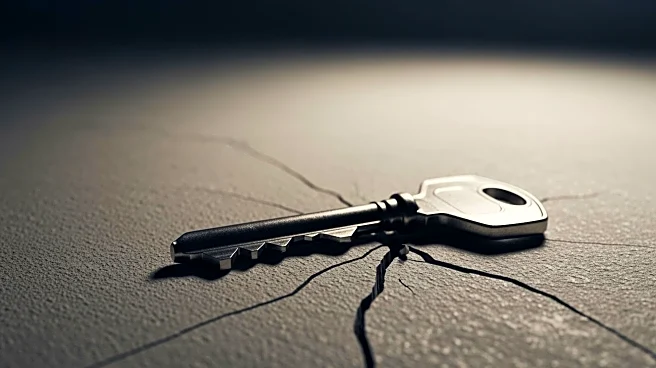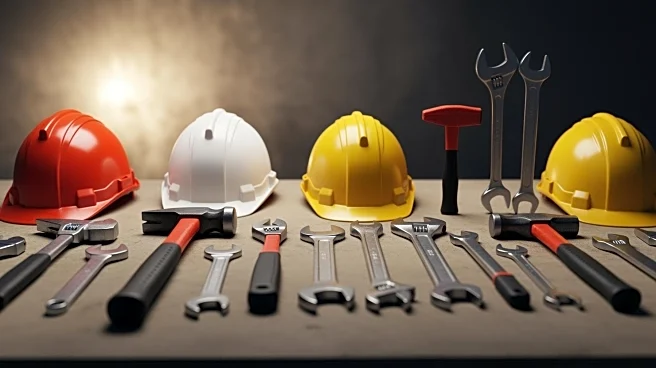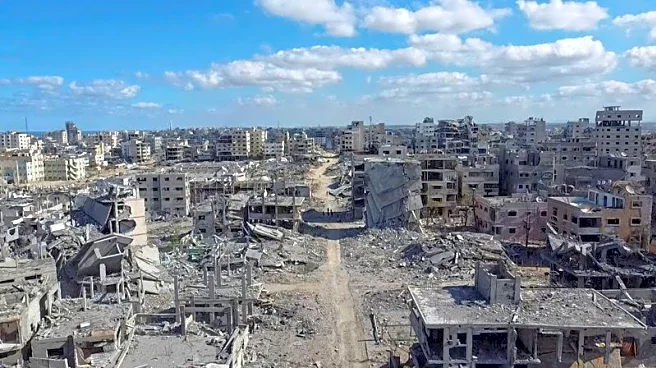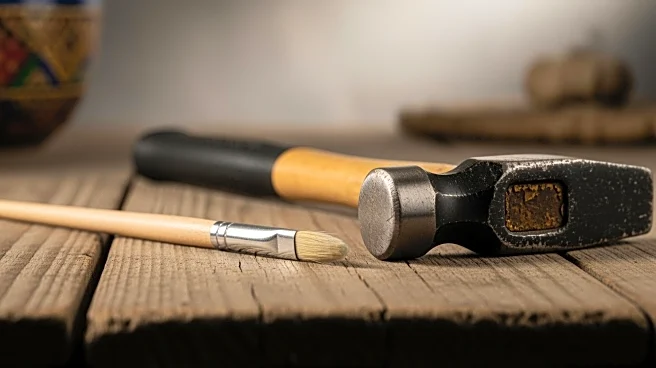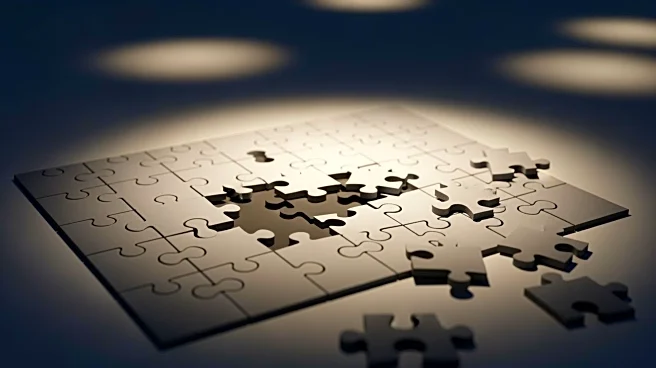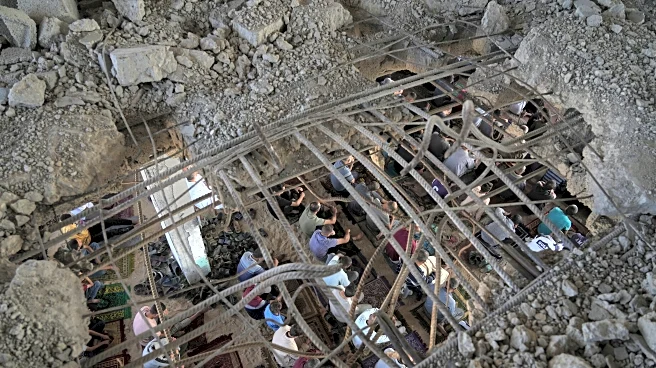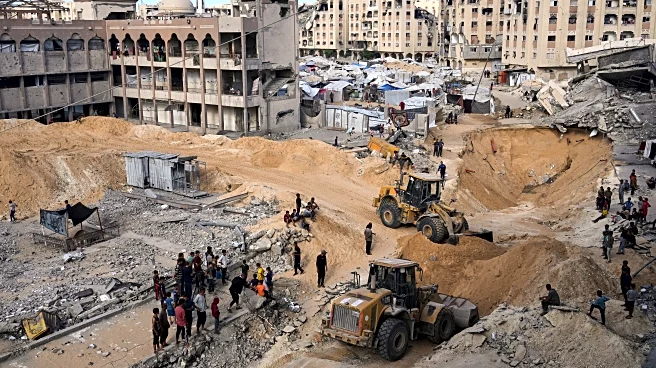What's Happening?
Following a ceasefire between Israel and Hamas, cultural workers in Gaza are beginning to focus on rebuilding their lives and heritage. The ceasefire comes after six months of intense conflict that displaced
hundreds of thousands of Palestinians and caused significant destruction. Despite ongoing tensions and accusations of ceasefire violations, there is a cautious hope among Gazans for a return to normalcy. Leena Majed Yassin, an archaeology graduate, and Majed Shala, an artist, are among those affected. Yassin's studies were disrupted by the war, and she now hopes to continue her education and help preserve Gaza's heritage. Shala, who lost his home and art space, emphasizes the need for reconstruction to restore stability and normal life. The World Bank estimates that nearly 55% of Gaza's heritage sites have been damaged, with recovery costs projected at $192 million. Efforts are underway to plan heritage reconstruction, with priorities set by the Palestinian Ministry of Tourism and Antiquities.
Why It's Important?
The rebuilding efforts in Gaza are crucial for restoring cultural heritage and providing stability to the region. The destruction of historical sites and displacement of residents have significant cultural and social implications. Reconstructing these sites is not only about preserving history but also about rebuilding the community's identity and resilience. The involvement of international organizations like the World Bank highlights the global recognition of the importance of Gaza's cultural heritage. Successful reconstruction could foster a sense of hope and normalcy for residents, potentially easing tensions and contributing to long-term peace efforts. However, the challenges are immense, with significant financial and logistical hurdles to overcome.
What's Next?
The Palestinian Ministry of Tourism and Antiquities, in collaboration with international partners, is set to begin emergency conservation works. The focus will be on updating damage assessments and prioritizing key sites like the Monastery of Saint Hilarion. The success of these efforts will depend on the stability of the ceasefire and the availability of resources. The international community's support will be crucial in providing the necessary funding and expertise. As reconstruction progresses, it will be important to address not only physical rebuilding but also the psychological and social recovery of the affected population.
Beyond the Headlines
Rebuilding Gaza's cultural heritage involves more than physical restoration; it requires addressing the psychological impact on residents. The war has left deep scars, and rebuilding efforts must consider the emotional and social dimensions of recovery. Education and cultural preservation can play a vital role in healing and empowering the community. The involvement of local cultural workers in the reconstruction process is essential for ensuring that the efforts are culturally sensitive and community-driven. This approach can help foster a sense of ownership and pride among residents, contributing to a more sustainable and resilient recovery.


